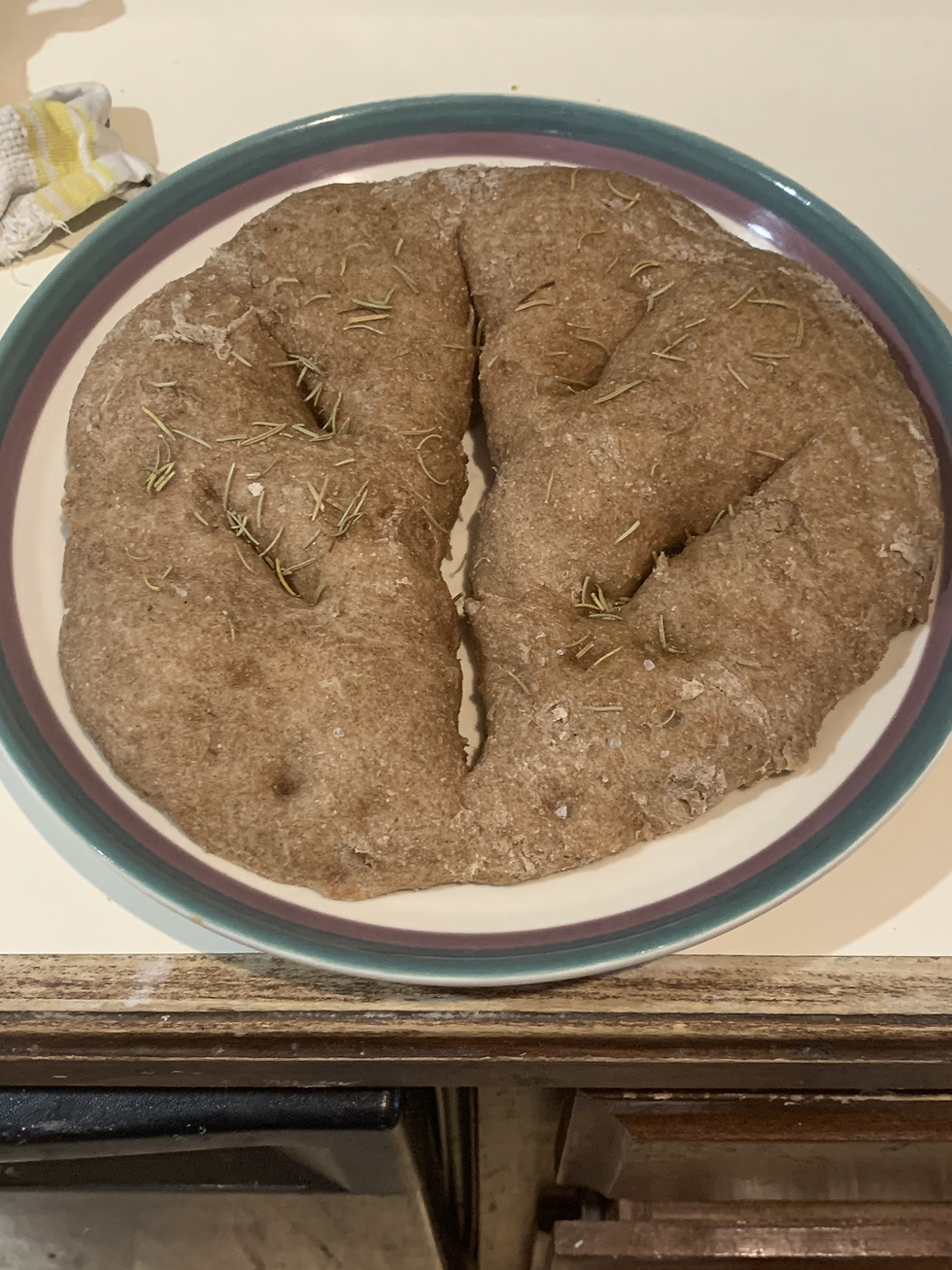Oat Bread: A Lower Class Staple
- segroh
- Nov 30, 2020
- 2 min read
Background:
During the French Revolution, popular styles of bread differed significantly between various regions and were largely dependent on which grains were being grown and harvested locally. Throughout France, and particularly in the central and southern regions of the country, oats were an inexpensive and easily accessible resource. Although not the most ideal ingredient to make a soft and satisfying loaf out of, famines and food shortages throughout the 18th century forced the lower class population of France to make do with whatever they could get their hands on.
Ingredients:
- 1 and 1/4 cups lukewarm water
- 1/2 teaspoons instant yeast
- 1 cup oats
- 1/2 teaspoons salt
- 2 and 1/2 cups whole wheat flour
Instructions:
1) Combine water, yeast, and oats into a large mixing bowl. Let sit for several minutes until bubbles appear on the surface of the mixture.
2) Add salt and one cup of the whole wheat flour, then stir until fully combined. Slowly add the remaining flour to the mixture until an incorporated dough begins to form.
3) Knead dough for several minutes until fully combined, then leave to rest in a greased and covered bowl until doubled in size, typically for 1 and 1/2 to 2 hours.
4) Once dough has doubled, preheat oven to 450 degrees. Place loaf on a greased baking sheet and bake for 20-25 minutes.
5) Let bread cool for an additional 20 minutes, then slice and enjoy!

Despite the fact that we had a lot more trouble making the oat bread than the buckwheat bread, largely because the oats were not pre-ground into a flour, we were overall very happy with how our bread turned out. The taste and texture, however, were odd, to say the least. Both the crust and inside of the loaf were hard and crumbly, and the taste of yeast was overwhelming. We believe that part of the issue, too, was that we were unsure of how long and at what temperature to bake the bread for, since electric ovens were not in use during the revolution. Regardless of the off-putting taste and texture of the bread, however, we were thrilled that we were able to find a way to turn oats into bread without using many other ingredients, especially because we were unable to find a historically accurate recipe. By using modern recipes as a rough template to bake our loaf of oat bread, we were able to overcome the lack of recorded recipes from the time period to bring such an important staple for many Frenchmen and women back to life.



Comments